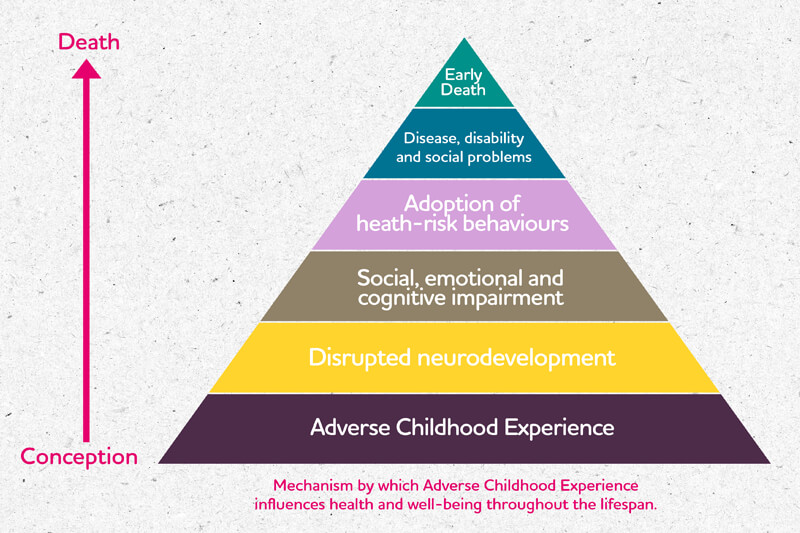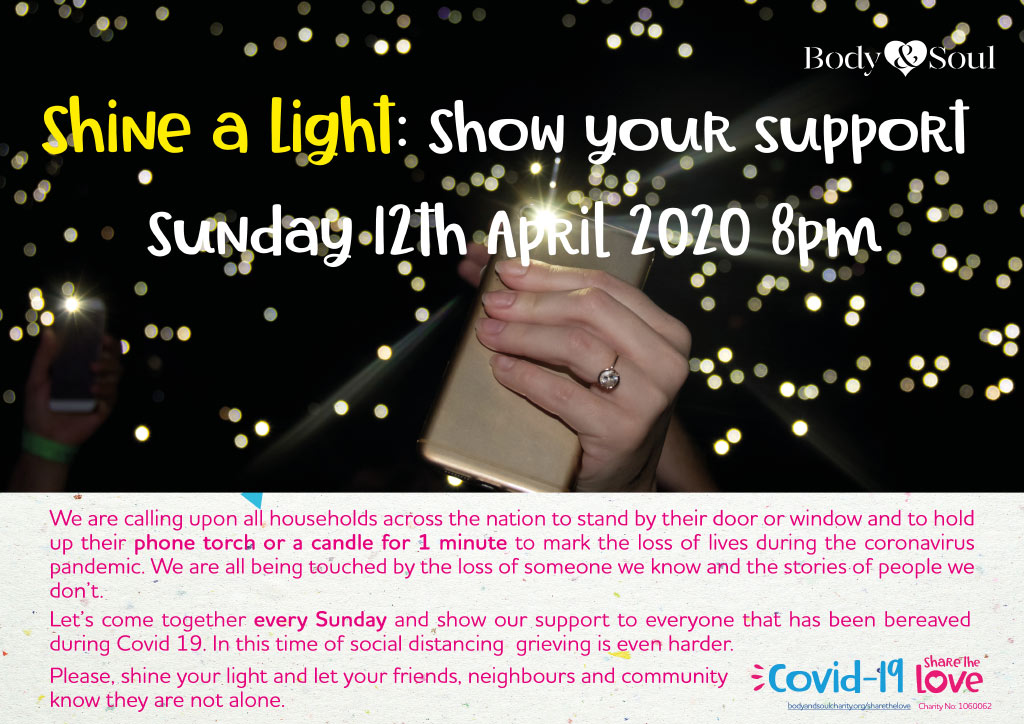
ACE
Adverse Childhood Experiences (ACEs) are an increasing global concern. There is a growing body of evidence that shows how traumatic experiences can have a profound effect on a child or young person’s developing brain and body with lasting impacts on their health throughout their lifespan.
The Adverse Childhood Experiences Study (ACE Study) was first published in 1998. It was a study that has revolutionised how we understand the relationship between childhood and long-term health as adults. Led by researchers Dr. Vincent Felitti and Dr. Robert Anda, the ACE Study surveyed more than 17,000 adults, between 1995 and 1997, who were patients of Kaiser Permanente in San Diego. Participants were asked to complete a questionnaire reporting traumatic experiences during childhood.
The study has isolated several events that can seriously impact a child’s neurological development. This list of ten experiences include witnessing violence, experiencing abuse, parental drug/alcohol misuse and loss of a parent. Whilst 2/3rds of the general population is likely to have experienced at least one ACE, experiencing multiple ACEs before the age of 18 contributes significantly to the long-term physical and mental health of a person. Having a high ACE score correlates with increased risk of cardiovascular disorders, mental health issues, low productivity, and a shortened life expectancy. People with 6 or more ACE scores have a life expectancy that is 20 years less than the average population.
Whilst the impact of adverse childhood experiences is undeniable, it does not have to be. Neurodevelopmental experts have established (with the help of PET scans and other technology) a greater understanding of neuro plasticity, and evidence now shows that the brain is more plastic, or more capable of developing appropriate pathways, longer than previously expected; pathways can even be re-established in older patients after stroke or traumatic brain injury. Additionally, experts in resilience have shown that resiliency can be built at any age, if a person receives the appropriate interventions. When a person with high ACE scores are in supportive, stable community groups, it can reduce the impact of high ACEs.
Toxic Stress
When we think about stress, we often think of having too much to do with too little time. For children and young people, it may be the first day at school, the exam, the school play. Stress caused by these types of events known as positive stress, is a mild or moderate stress response and short lived in duration. Positive stress is normal and, in fact, an important part of growing up, helping us to develop our capacity to manage stressful situations later on in life.
While positive stress is normal and necessary for healthy development, tolerable stress is a more severe response that has the potential to impact a child’s development over time. However, the negative effects are tempered by its limited duration which allows the child’s brain to recover in time.
Tolerable stress is made tolerable by its infrequency and the presence and guidance of a caring adult. Tolerable stress can become toxic stress and cause long term harm to a child’s developing brain and body if there is no caring adult to help the child manage the stress.
Toxic stress is the extreme, frequent or extended activation of the body’s stress response without the buffering presence of an adult. Strong, frequent and/or prolonged adversity, such as ACEs, without adequate support from an adult can cause a chronic and severe response in a child with serious implications. Toxic stress sis particularly harmful for children and young people because of the changes and growth going on in the brains and bodies.
If left untreated, toxic stress can lead to increased risk of adult diseases including heart disease and cancer.
Trauma Informed
The term Trauma is derived from the Greek word for ‘wound’. We understand the effects of being traumatised are very individual, and people who have experienced trauma are impacted physically, emotionally, behaviourally, cognitively, spiritually, neurobiologically and relationally.
“Trauma is when we have encountered an out of control, frightening experience that has disconnected us from all sense of resourcefulness or safety or coping or love” – Tara Brach 2011
Understanding how trauma impacts people allows us to bring together resources essential to the healing process. Working from a trauma-informed approach has an impact on this healing and the quality of service provided. Members have shared that Body & Soul is a place where they feel more able to function and less likely to be judged than in other settings. This is the experience we intend and results from maintaining a conscious and consistent approach.
Adopting a ‘trauma-informed approach’ rejects the concept of our members being seen as “sick,” resistant or uncooperative with that of being affected by an “injury”.
A trauma-informed mindset would ask “What has happened to you?” not “What is wrong with you?”.
Trauma-informed practice recognises symptoms as originating from adaptations to the traumatic event(s) or context. Validating resilience is important, even when past coping behaviours are now causing problems. Understanding a symptom as an adaptation reduces the guilt and shame that is so often associated with trauma. It also increases a person’s capacity for self-compassion, and provides a guideline for developing new skills and resources so that new and better adaptations can be developed for the current situation (Elliot et al., 2005).
This approach depends on everyone within the community having a basic understanding of the psychological, neurological, biological, social and spiritual impact that trauma and violence can have. It is only through integrating this into policy, procedures, practice and environment that Body & Soul can provide loving, authentic and compassionate connections.
Our Environment
Understanding how people respond to trauma is the basis for creating a place of sanctuary. Creating a sense of safety and security is only possible when we all understand the nature of both individual and organisational trauma. Everyone at Body & Soul works together to build and nurture a community and environment where healing and learning can thrive hand in hand.
Body & Soul recognises the resilience of members in stepping through the door for the first time, but we also know how much we can positively affect what follows. A therapeutic journey begins before a workshop or a therapy session and involves all our senses, consciously and subconsciously. From the first day services opened 21 years ago, Body & Soul has focused on the physical and human environment and approached design through the perspective of its members, always asking the question, “How would that feel?”.
We understand the journey to Body & Soul commonly passes through traditionally institutionalised, sterile environments that can feel oppressive or unwelcoming. Body & Soul is designed to every level of detail, to be the antithesis of this, to create a sense of safety and welcome. Through our partnerships with architects DMFK and a range of interior design specialists, our building not only communicates visually, but emits warmth, acceptance and value where often these can feel in deficit.
We have strived to source materials that invite exploration and connection. Curious alcoves in the reception tempt passers-by to look further, the marble-chipped floor urge you to remove your shoes, and the felt wall-art requires to be stroked. Space is understood by how it connects to all our members, and cared for so that it can provide order amidst lives characterised by disorder.











